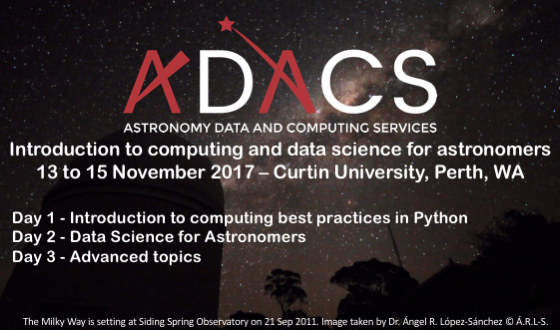In the era of big telescopes and big data, data analysis practices need to scale to the volume of data processing and analysis needed for researchers to compete in a world-class arena.
This 3-day workshop was aimed at postgraduate students and ECRs who might not have had formal computational training and would like to get up to speed. Practical examples in the workshop were taken from observational astronomy.
This event was a 3 day course 13-15 Nov 2017 which was hosted at Curtin University.
The course content is:
Day 1 – Introduction to computing best practices in Python
- Keynote – Astronomer’s toolkit
- Version control (Git)
- Python
- Introduction to Python
- Introducing Jupyter notebooks
- Visualisations
Day 2 – Data Science for Astronomers
- Python
- Pandas
- Astropy tutorials
- Plotting
- Data Acquisition and Virtual Observatories
- Introduction to virtual observatories and how to access data
- e.g., Topcat, Xmatch, SQL and ADQL
- Dealing with fits files
- Integration with Python
- Introduction to virtual observatories and how to access data
Day 3 – Advanced topics
- Introduction to machine learning in Python (scikit-learn)
- Introduction to Nimbus (Pawsey cloud)
- Clinic/helpdesk
Slides and notebooks: yet to be located

